As critics of renewable energy like to point out, the main downside of solar and wind energy — apart from the large amount of space such systems require — is intermittency.
Power plants which burn coal or natural gas can go full throttle in periods of high demand, then ease back when less electricity is needed. But every day the sun sets, and humanity has no control over the wind.
The output of Taiwan’s photovoltaic arrays is likely to peak when demand is highest, because so many people use air conditioning when it’s hot and sunny. With wind, it’s a very different story. Data published by state-run utility Taiwan Power Co (Taipower) shows that, between May last year and April this year, the most productive month for the country’s wind farms was January. December and October weren’t far behind, but in April, wind contributed just 43.15 GWh to the grid, barely a third of the January total.
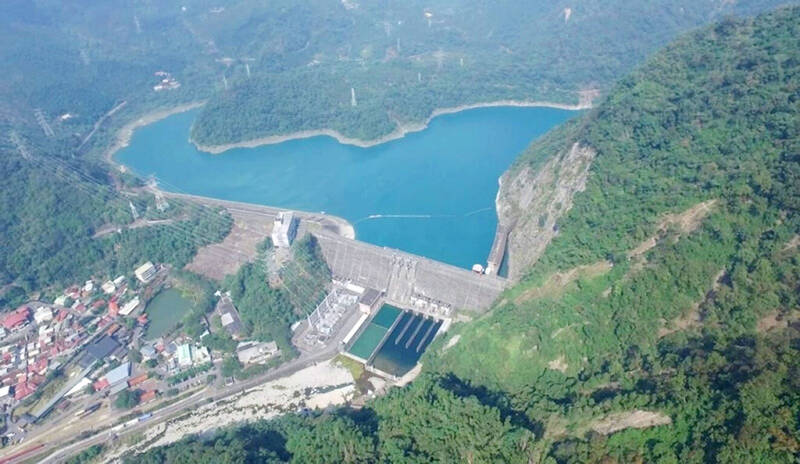
Photo courtesy of Taipower
To avoid wasting surplus electricity generated on cold days, when wind turbines spin but demand is low, and to ensure there’s sufficient power even after dark, Taiwan is rapidly expanding its energy storage capacity.
PUMPED STORAGE HYDROPOWER
For many years, the only way in which Taipower could store meaningful amounts of power (as opposed to fuel) was via a pumped storage hydropower (PSH) system in Nantou County.
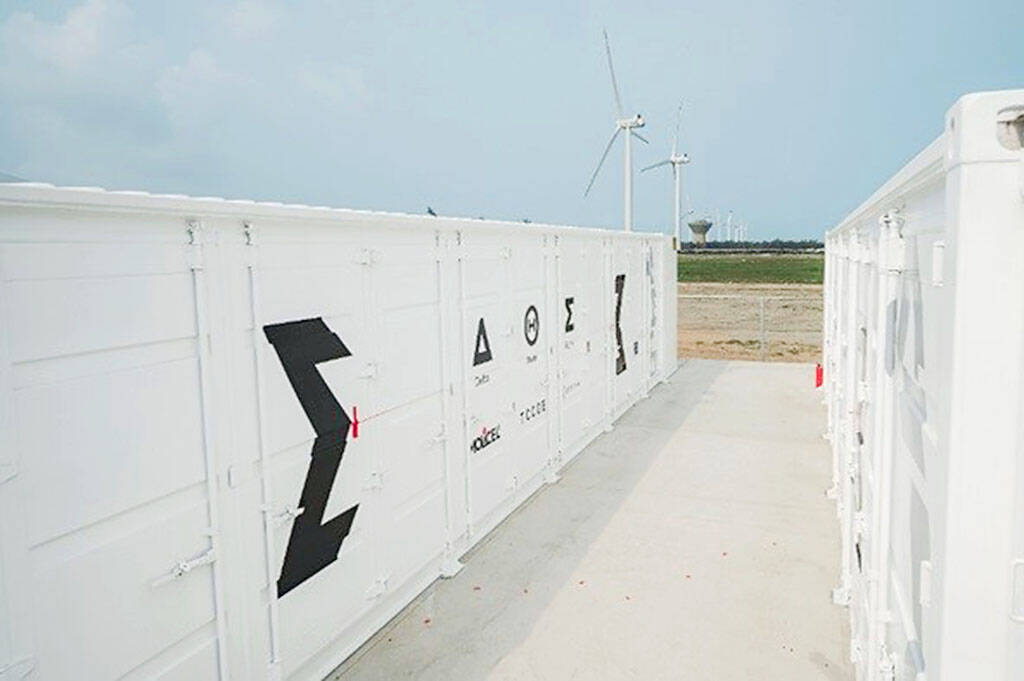
Photo courtesy of NHOA TCC
It’s a typical PSH setup. Surplus electricity is used to move water from Mingtan Reservoir (明潭水庫, where the top of the dam is 375m above sea level) to Minghu Reservoir (明湖水庫, dam-top altitude: 450m), or from Minghu to Sun Moon Lake (elevation 748m).
These bodies of water function like giant batteries. When the grid needs a boost, stored water is released. As it flows downhill, it turns electricity-generating turbines.
As part of Taipower’s efforts to enhance grid resilience and stability, the utility is pushing ahead with plans to add PSH capacity at Shimen Reservoir (石門水庫) in Taoyuan and Deji Reservoir (德基水庫) in Taichung.
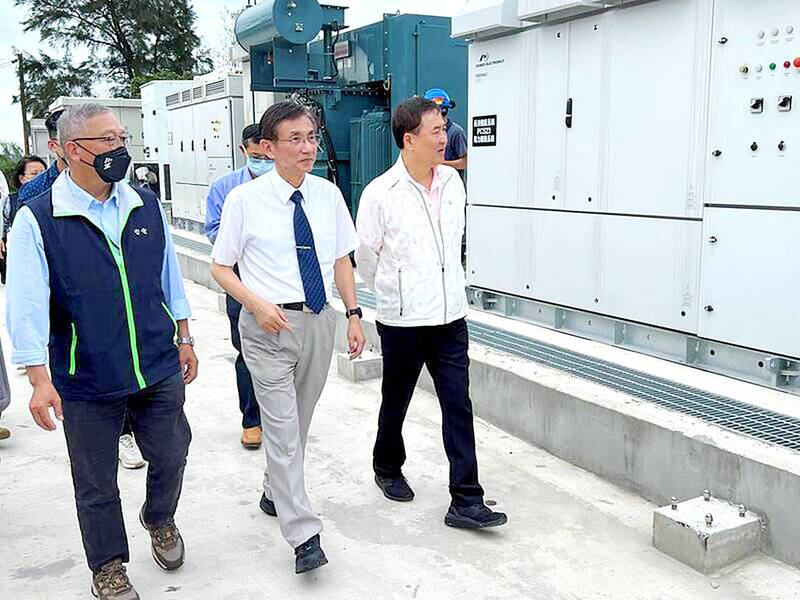
Photo courtesy of the Control Yuan
The former, said to be a relatively straightforward project, may be finished before the end of next year. The latter is more challenging, as it involves boring a 10.7km-long tunnel to connect Deji Reservoir with Guguan Reservoir (谷關水庫). Completion is scheduled for 2034. Feicui Reservoir (翡翠水庫) in New Taipei has also been identified as a potential PSH site.
PSH systems are reasonably efficient, but somewhat slow when it comes to meeting sudden surges in demand or unforeseen interruptions in supply. Batteries offer much better response times, milliseconds rather than minutes.
This is one reason why utilities hoping to insure themselves against grid disruptions are pouring money into large-scale battery storage. It’s also why, in some parts of the world, entrepreneurs are investing in such systems. When electricity is cheap, they buy; when the spot price for power soars, they can cash in.
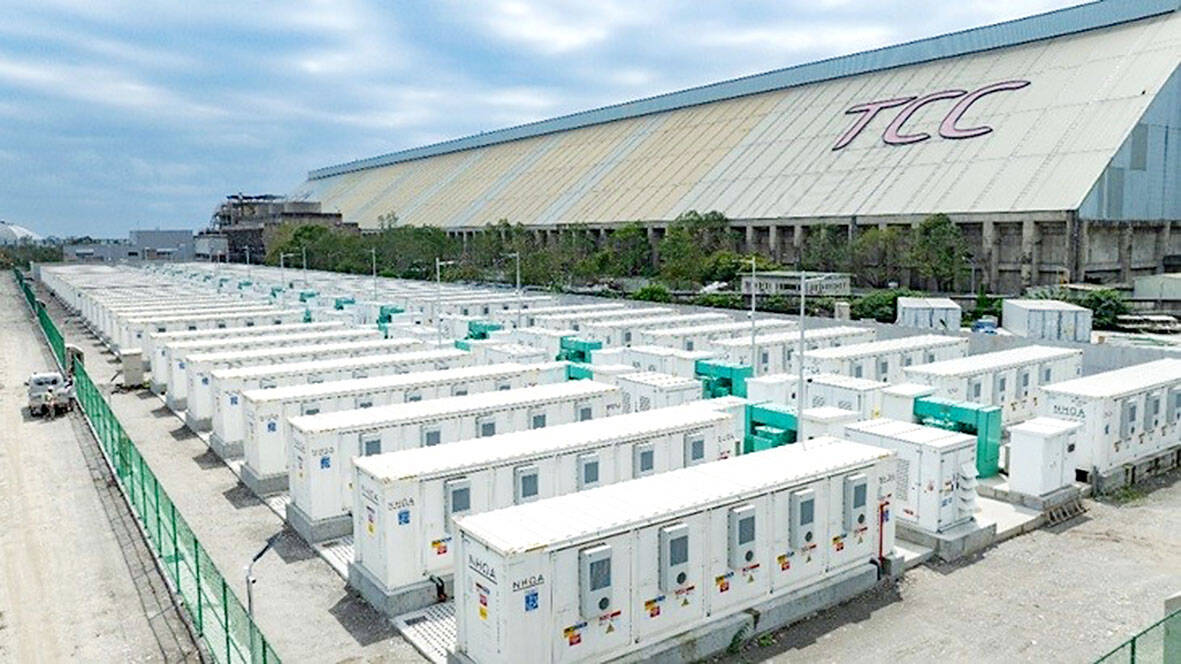
Photo courtesy of NHOA TCC
Some power-hungry enterprises use on-site battery storage systems so they can engage in “peak shaving” and reduce their purchases of electricity during those hours when its price is high.
On May 13, Canary Media observed “this year, for the first time ever, the fastest-growing energy storage market appears to be Texas, a free-market-affirming red state that officially cares little about solving climate change. Nonetheless, the state’s low-regulation, business-friendly landscape has created ideal conditions to build batteries quickly and at scale.”
In Taiwan, the development of energy storage was initially rather slow, one reason being an expectation that the politicians who supervise Taipower will force the utility to keep prices relatively low.
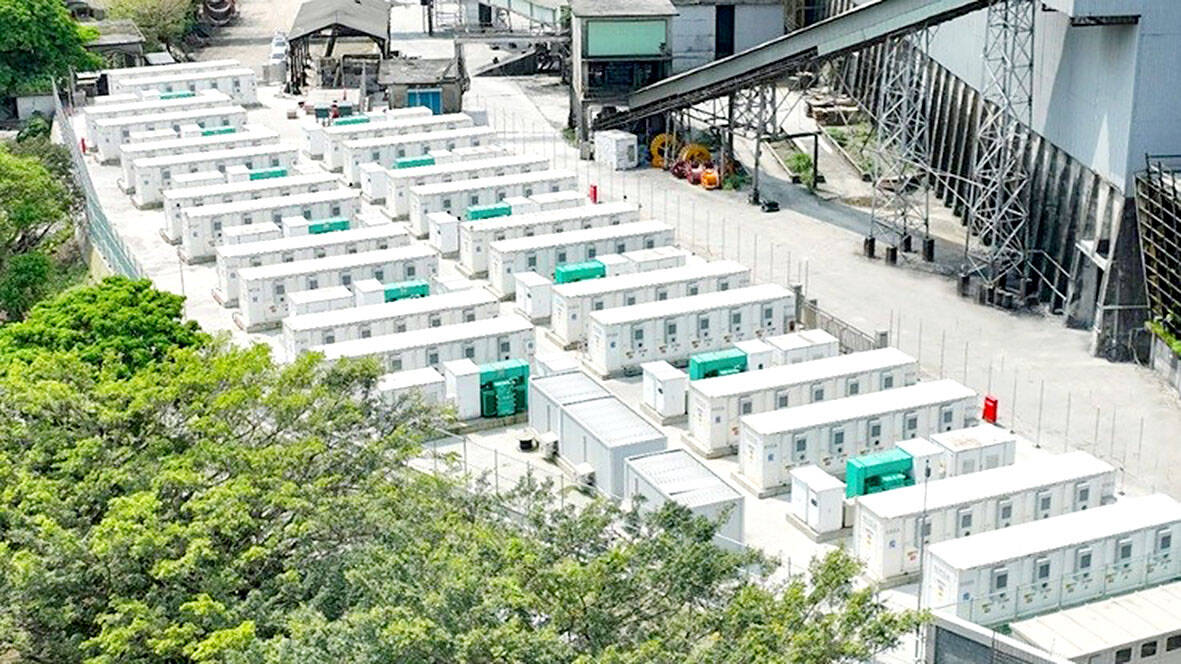
Photo courtesy of NHOA TCC
While qualifying their forecast as “an optimistic scenario,” a Nov. 17, 2021 article published by Taipei-based InfoLink Consulting predicted that “cumulative energy storage installations will jump from 3 GWh [in 2023] to 20 GWh in 2030.” (On a summer’s afternoon, 20 GWh is enough to keep Taiwan going for about half an hour.)
Such optimism might well be justified. In an April 6 report last year, Canary Media praised Taiwan, saying: “Other countries spent years hashing out policy reforms to promote storage adoption. Jumping in after a decade of battery cost declines, Taiwan has managed to bypass the foot-dragging and get batteries built by both the incumbent utility and a mix of competitive developers.”
This shift, the report went on to say, will “help ensure the grid doesn’t get wobbly as even more wind and solar connect to it.” Given the frequency of blackouts in Taiwan, this is a compelling argument in favor of much more battery storage.
Among Taipower’s investments in battery storage is a 20 MWh facility at the Salt Field Solar Farm in Tainan’s Jiangjyun (將軍) and Cigu (七股) districts. Compared to the sprawling solar farm, the storage system is compact, just eight 20-foot freight containers filled with rechargeable lithium-ion battery modules.
SAFETY ISSUES
Since the Tainan battery park was connected to the grid at the start of last year, a 20 MWh storage facility at Luyuan Substation (路園變電所) in Kaohsiung’s Alian District (阿蓮) has been completed. And earlier this year, 60 MWh of battery storage came online at Longtan Substation (龍潭變電所) on the border of Taoyuan and Hsinchu County.
Following multiple battery-cluster fires, including 28 in South Korea between 2017 and 2019, those designing and building such systems now have a better idea of the safety risks. Once they’ve started burning, lithium-ion battery conflagrations are notoriously difficult to extinguish. What’s more, they produce toxins including carbon monoxide, hydrogen chloride, hydrogen cyanide, hydrogen fluoride and methane.
The Longtan project was a collaboration between Taipower and Fluence Energy, Inc, part of Siemens AG. An emailed response from Fluence Energy, Inc touts its experience delivering “complete energy storage systems with world-class safety standards and capabilities integrated into every aspect of product design.” Safety features include emergency shutdown circuits, as well as gas detection, fire detection, and suppression systems.
In 2021, Taiwan Cement Corporation (TCC) took a majority stake in an Italy-based battery-storage company which they renamed NHOA. Last December, NHOA commissioned a 311 MWh storage system at TCC’s Heping Plant in Sioulin Township (秀林), Hualien County. By the end of this year, the total installed capacity of NHOA TCC storage sites around Taiwan is expected to reach 655 MWh.
Some static storage projects overseas utilize repurposed electric-vehicle (EV) batteries. Because they’ve lost 20 percent or more of their capacity, these battery packs are no longer wanted by range-conscious EV owners — but in other roles they can be used for several more years.
Every battery deployed by NHOA TCC is new, and the majority were sourced from Samsung SDI, according to emailed answers provided by TCC’s head office. The batteries, which are expected to last 10 to 15 years, are installed inside specially-designed cabinets made of ultra-high performance concrete. Each cabinet’s temperature-monitoring and fire-suppression system will, if necessary, inject 9,000-plus liters of water, “while maintaining the integrity of the cabinet, ensuring the battery modules are submerged to effectively stop thermal runaway and extinguish the fire,” TCC says.
When asked how it plans to dispose of end-of-life batteries, both TCC and Fluence Energy, Inc express good intentions without providing many details. Saying that Molicel (a battery brand owned by TCC) is “actively engaged” in recycling projects, the cement conglomerate explains its teams “will also closely exchange information on recycling technologies moving forward.”
PSH and batteries aren’t the only energy storage options.
COMPRESSED-AIR ENERGY STORAGE
Compressed-air energy storage (CAES) uses electricity to compress air and seal it under high pressure. When power is needed, the air can be released through a turbine. Few CAES systems are more than 65 percent efficient, however, compared to 70 to 80 percent for PSH and a claimed 85 to 95 percent for lithium-ion batteries.
Surplus electricity can also be used to split water into hydrogen and oxygen by electrolysis. The hydrogen can then be compressed and stored for future use in a fuel cell or an internal combustion engine.
As the number of EVs grows, vehicle-to-grid (V2G) technologies are expected to increase storage flexibility and capacity. Via a smart meter, a Tesla that’s plugged in to the mains and mostly charged up could sell power back to the grid if it’s needed, then resume recharging later. This kind of innovation may or may not meet resistance, depending on whether motorists see it as undermining their precious “go anywhere/go anytime” autonomy, or as a way to cut the cost of owning an EV.
Steven Crook, the author or co-author of four books about Taiwan, has been following environmental issues since he arrived in the country in 1991. He drives a hybrid and carries his own chopsticks. The views expressed here are his own.
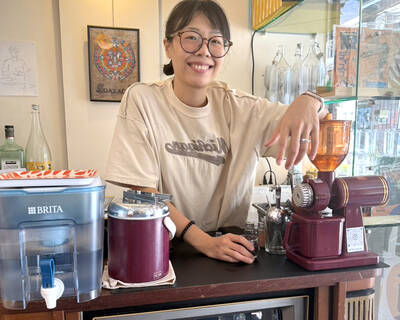
Cheng Ching-hsiang (鄭青祥) turned a small triangle of concrete jammed between two old shops into a cool little bar called 9dimension. In front of the shop, a steampunk-like structure was welded by himself to serve as a booth where he prepares cocktails. “Yancheng used to be just old people,” he says, “but now young people are coming and creating the New Yancheng.” Around the corner, Yu Hsiu-jao (饒毓琇), opened Tiny Cafe. True to its name, it is the size of a cupboard and serves cold-brewed coffee. “Small shops are so special and have personality,” she says, “people come to Yancheng to find such treasures.” She
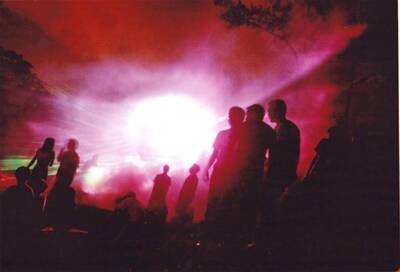
In July of 1995, a group of local DJs began posting an event flyer around Taipei. It was cheaply photocopied and nearly all in English, with a hand-drawn map on the back and, on the front, a big red hand print alongside one prominent line of text, “Finally… THE PARTY.” The map led to a remote floodplain in Taipei County (now New Taipei City) just across the Tamsui River from Taipei. The organizers got permission from no one. They just drove up in a blue Taiwanese pickup truck, set up a generator, two speakers, two turntables and a mixer. They
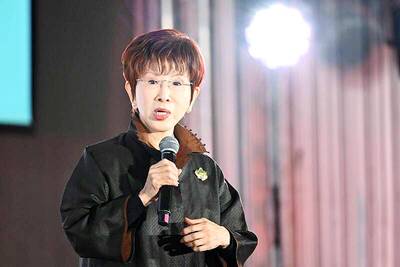
Former Chinese Nationalist Party (KMT) chairwoman Hung Hsiu-chu’s (洪秀柱) attendance at the Chinese Communist Party’s (CPP) “Chinese People’s War of Resistance Against Japanese Aggression and the World Anti-Fascist War” parade in Beijing is infuriating, embarrassing and insulting to nearly everyone in Taiwan, and Taiwan’s friends and allies. She is also ripping off bandages and pouring salt into old wounds. In the process she managed to tie both the KMT and the Democratic Progressive Party (DPP) into uncomfortable knots. The KMT continues to honor their heroic fighters, who defended China against the invading Japanese Empire, which inflicted unimaginable horrors on the

Hannah Liao (廖宸萱) recalls the harassment she experienced on dating apps, an experience that left her frightened and disgusted. “I’ve tried some voice-based dating apps,” the 30-year-old says. “Right away, some guys would say things like, ‘Wanna talk dirty?’ or ‘Wanna suck my d**k?’” she says. Liao’s story is not unique. Ministry of Health and Welfare statistics show a more than 50 percent rise in sexual assault cases related to online encounters over the past five years. In 2023 alone, women comprised 7,698 of the 9,413 reported victims. Faced with a dating landscape that can feel more predatory than promising, many in